Making for the military port of Valparaiso, this week our sailors successfully completed a first “Plastisphère” protocol test as entrusted by Linda Amaral Zettler and Erik Zettler of the NIOZ. In this way, they’re ready to take samples of the plastics left in their care between the coasts of Chile and French Polynesia from late July. This initial test enabled them to ensure that all the elements are in place so they can follow this protocol to the letter once the catamaran leaves the South American continent.
Kim van Arkel, the Foundation’s scientific adviser explains to us how the 6 men and women that make up the crew on-board divided up the tasks to follow the letter of the protocol.
“Anne-Laure, our second in command, is transformed into the scientific manager to roll out the tested protocol,
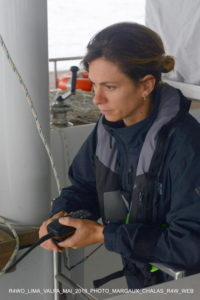
Jean-Marc is at the vessel’s controls and Basile reports the vessel’s position and other data that may prove useful to understanding the environment, such as the surface water temperature at the start and end of the sample taking.
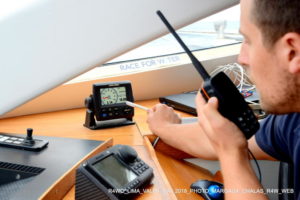
Anne is our Manta net launch expert, particularly since our previous sea missions with the scientists from JPI Oceans, who were hosted aboard in Bermuda, Cuba and Guadeloupe.
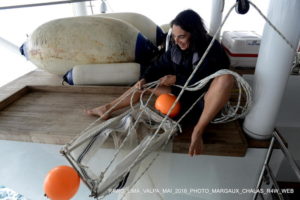
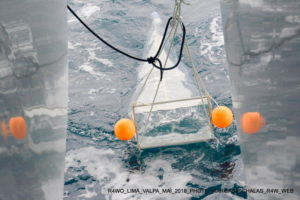
The Manta net is so-called as it looks like a Manta ray with its mouth open. In general, it’s launched from the boat to pick up particles floating on the surface of the water (photo 08-22-DSC_4315).
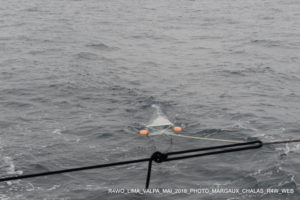
As for Margaux, our new steward, she has been transformed into a special offshore correspondent and has created this photo reportage, which enables us to visualise the test as if we were there!
Once the Manta net is retrieved, that’s not the end of the procedure! When it’s back on-board you need to rinse it with sea water to loosen all the particles and microorganisms from the fabric (photo 1), recover the collector (the tip of the Manta net, which contains the samples of microplastics taken at the surface) (photo 2) and carefully analyse the contents of the collector. (photo 3).
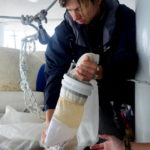
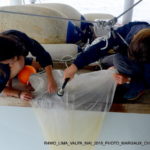
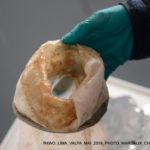
Next, using tongs that have been sterilised beforehand (photo 25-51-DSC_4451), you have to once again delicately take as big a sample as possible of a plastic particle (photo 28-54-DSC_4466 + 30-57-DSC_4472). The data is written down in the log to keep a written trace of the first “Plastisphère” protocol test carried out aboard Race for Water. (photo 33-62-DSC_4484 or 4487). The sample is finally placed in the freezer at -20°C. Once all the samples have been taken they’ll be sent to the NIOZ for analysis.
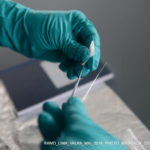
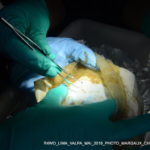
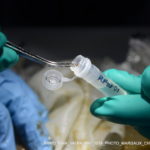
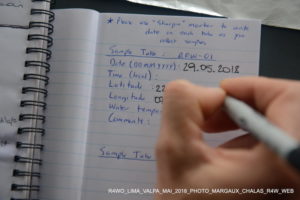
The main aim of the project being to identify the organisms which have associated themselves with these plastics, the trickiest element of this operation is to ensure the revealing DNA of these attached microorganisms does not deteriorate as this is of particular interest to Linda and Erik within the context of this Plastisphère project”.